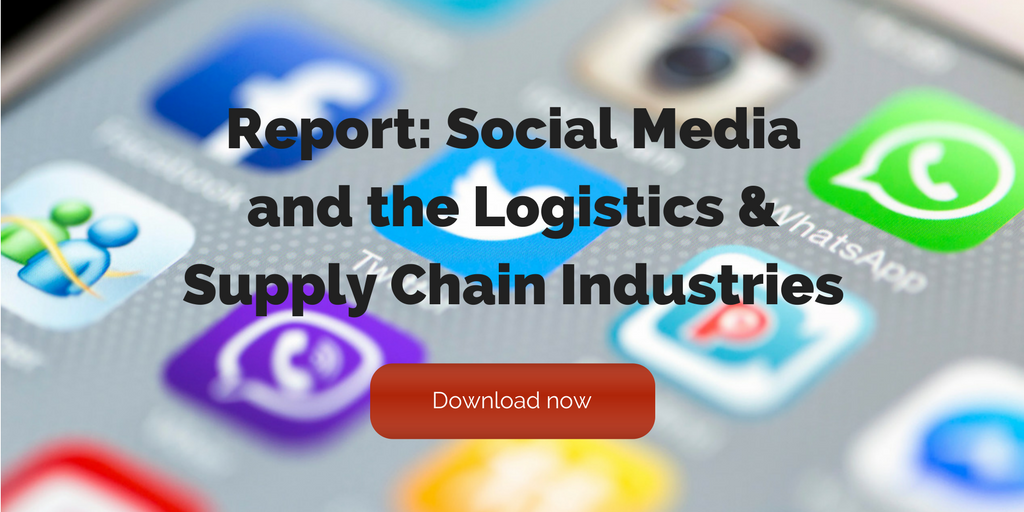
by Fronetics | May 25, 2017 | Blog, Content Marketing, Marketing, Social Media
In this month’s social media news, Facebook cracks down on misleading content, while Snapchat and Pinterest appeal to advertisers.
If you sense that the competition between social media networks for users and advertisers is heating up, you’re not alone. This month, Facebook continues its quest to cut down on the sharing of false information and misleading content while launching better lead-tracking tools for ads. Twitter moves to protect user privacy by updating its terms and conditions. And exciting new technology launches at Google, Pinterest, and Snapchat.
Here’s the latest social media news for the supply chain.
Facebook reduces links to low-quality web pages and misleading ads
After months refining its News Feed algorithm and ads, Facebook announced another update to weed out false information and spam in a blog post: “We reviewed hundreds of thousands of web pages linked from Facebook to identify those that contain little substantive content and have a large number of disruptive, shocking or malicious ads. We then used artificial intelligence to understand whether new web pages shared on Facebook have similar characteristics. So if we determine a post might link to these types of low-quality web pages, it may show up lower in people’s feeds and may not be eligible to be an ad. This way people can see fewer misleading posts and more informative posts.”
As changes roll out gradually in the coming months, publishers with high-quality landing page experiences might notice an increase in traffic, while those with negative experiences will see a decline. Businesses looking to improve their web experiences can read the full Facebook Business post and visit the Help Center for tips.
See also:
Twitter updates opt-out process
Twitter is helping users weed out irrelevant personalized ads and protect their privacy. The Twitter website tag will now “rely on the Digital Advertising Alliance’s consumer choice tool and other ways to opt-out described here.” Site owners must update the privacy policy to notify their users of this new opt-out process.
Google unveils Google Lens
Google’s latest product, Google Lens, will leverage computer vision and AI technology to enable smartphone cameras to not only see, but to understand what it’s seeing to help users. For example, if you take a photo of the login information on the sticker on your router, the lens will identify the action by offering to connect you to the Wi-Fi, using the photo of the network name and password.
Snapchat reaches 166 million daily active users, rolls out limitless snaps, adds ad lenses and geofilters
In its first quarterly earnings report since going public in March, Snap Inc. announced that its daily active user (DAUs) base grew to 166 million in Q1 2017. Additionally, the Snapchat app released four new creative tools:
- Infinity timer setting: This option eliminates the 10-second time limit and allows your videos to play as long as you like. The snap then erases when closed.
- Looping: Users can choose to have their photos or videos loop indefinitely until viewers close the snap.
- Magic eraser: Users can select and remove objects from snaps.
- Emoji drawings: Users can now draw with emojis using the pen tool.
Ad partners also have three new creative tools at their disposal:
- World Lenses are an extension on Snapchat’s Sponsored Lens, which already let advertisers turn users’ selfies into ads. Sponsored World Lenses allow advertisers to create content for the rest of the photo beyond the face, like floating 2-D or 3-D objects.
- Audience Lenses let advertisers buy a guaranteed number of Lens impressions for a specific audience. This includes those that are targeted by demographics like age and gender, as well as those identified as falling in one of Snapchat’s Lifestyle categories.
- Smart Geofilters automatically add location information or other real-time information to a nationwide or chain Geofilter. This ad type allows users to activate branded overlays that appear when they swipe left or right on the camera.
Pinterest applies visual search technology to ads
Pinterest announced that it’s now leveraging the technology behind its newly released visual discovery tools — Shop the Look, Instant Ideas and Lens beta — to make Promoted Pins even more effective. Machine learning allows the platform to identify what is most relevant to a user based on the images s/he pins. For example, if the user pins images of blue, formal, A-line dresses, Pinterest will begin to show similar images in that user’s feed. The same technology will now be applied to ad content. “We help people find your ads in the very same way, connecting people to products they like the looks of, but don’t quite have the vocabulary to describe. As a result, your ads feel more relevant, and they can reach audiences you may not have considered before.”
Not sure how to use Pinterest’s advertising tools? Check out these 4 free webinars for businesses.
Facebook enables targeting to users who have saved posts, adds offline conversion solution for lead ads
Facebook page admins can now see the number of saves for each page post, then “create custom audiences of people who have saved [their] posts and retarget them with different content.”
Additionally, Facebook is now allowing businesses to connect their CRM, point of sale, or even their call-center systems to their Facebook ad campaigns to help advertisers monitor which of their lead ads drive those business results. This is huge for advertisers who have been trying to attribute conversions from lead ads based on offline activity.
Ellen, Ludacris, Katy Perry and more to star on YouTube’s exclusive new shows
YouTube announced plans to launch seven new “star-studded” shows, exclusively premiering on the video platform “beginning later this year.” Stars include Kevin Hart, Rhett and Link, Ellen DeGeneres, Katy Perry, the Slow Mo Guys, Demi Lovato, and Ludacris. The shows will be fully ad-supported and thus free to watch.
Facebook releases “Latest Conversations” feature
Facebook’s new Latest Conversations feature shows timely topics that many members across the network are discussing in its search results. It appears in its own section of the search results and includes a running count of how many people are talking about the topic at the moment. This feature is currently only available on the mobile app.
Related posts:


by Fronetics | May 24, 2017 | Blog, Content Marketing, Marketing
Ready to give up on content marketing? Chances are, you haven’t given it a fair shot.
You’re three or maybe even six months into your new content marketing program. Congratulations! You’re probably noticing an uptick in web traffic, social reach, and other engagement metrics like time on page. You’re right on track! But you have no leads or sales to speak of. And whether that’s got you nervous that you’re doing something wrong, or just has your boss breathing down your neck to get some results FAST, I’m here to tell you: Now is NOT the time to give up on content marketing.
In fact, giving up now is just about the worst thing you can do. You’ve already made the majority of the investment without giving your program time to deliver your return.
Why does content marketing take so dang long to work?
Content marketing is a long-term solution that helps businesses build brand awareness, grow their audience, and generate new leads and sales. But it takes time and effort to achieve results. You shouldn’t give up on content marketing before the seeds you sow have time to bear fruit.
Just how long will it take for your content marketing strategy to yield results? Well, that really depends on your business and your goals, but you can count on at least six months. (Joe Pulizzi, founder of the Content Marketing Institute, says more like 18.) The point is, content marketing is not a magic, overnight solution. The reason reflects why content marketing is effective in the first place.
4 reasons why it’s NOT time to give up on content marketing
1) Developing your strategy takes time.
Only 11% of companies without a documented content marketing strategy find their efforts to be successful, compared to 60% of companies with a strategy in place. (That number rises to 86% when the company designates someone to lead the strategy.) The significant increase in effectiveness can be attributed to the careful thought and research that goes into building a strategy.
You will need several months to build the foundation of your content marketing plan if it is to be effective. You need time to research the kind of content that resonates most with your audience and to truly understand the (very specific) demographic that finds value in what your company offers. Then you need time to determine and test which distribution channels will most effectively reach your target audience, to discern a plan for content production, and to build out an editorial calendar reflective of your strategy.
Without getting all of these pieces precisely right, you’ll waste an enormous amount of energy and resources working on an ineffective strategy. Take the time to evaluate the market for your business and its content marketing strategy, and you’ll realize results in time.
2) Becoming an authority takes time.
The goal of your content marketing efforts should be to be a consistent source of information and value to your audience, who gradually will come to trust your authority and reward you with their business when they are ready to make a purchase. And establishing yourself as an expert doesn’t happen overnight.
Consistency is key for two reasons. For one, the average B2B buyer consumes between two to five pieces of content before making a purchase decision. If your content is old, arbitrary, contradictory, or otherwise unreliable, buyers will chose a different vendor whose content is more trustworthy. Consistent and consistently good content keeps your target audience engaged and builds your credibility with them.
Secondly, search engines rank websites based on several factors, and one of the most important is consistency. If your company blogs every other month, compared to companies that post several days a week, your posts will be penalized in search results. And since very few readers click beyond the top five search results, you’re drastically reducing your organic search potential.
As a SumAll article put it, “Whether getting traffic to your blog or your content ranked in the search engines, it doesn’t happen overnight, but instead by repeatedly creating and distributing quality content on a frequent basis for the long-term.”
3) Building your audience takes time.
The B2B buying process is becoming longer and more complex because the majority of buyers (82%) are using more sources to research and evaluate products and services, and they are spending more time in the research phase itself. In fact, 71% of B2B researchers start with a generic search — rather than searching for a particular company — and do an average of 12 searches before even engaging with a specific brand’s site. They are 57% of the way down the sales path by this point, meaning they have already spent a fair amount of time educating themselves with the enormous amount of information available to them on the internet.
This means you need to allow your target audience time to find you and complete thorough research about you and your competitors before you even realize that the lead exists. And likely there will be more time before a sale takes place.
Content marketing is much more about lead nurturing than producing instant results. As you build your reputation as a valuable source of information, you will simultaneously build a loyal following of readers and content consumers who continue to return to you for knowledge and, ultimately, purchases. Relationship-building is not a streamlined process, but it does foster the ever-valuable repeat business that will have a greater impact on your bottom line than a one-and-done sale.
4) Your sales cycle takes time.
Unfortunately, content marketing cannot decrease the length of your sales cycle. Thus, you can’t expect to see the fruits of your labors (in terms of dollars) until at least one cycle is complete.
There should be, however, hints along the way that your efforts are working. Metrics like increased website traffic, email registrations, and social reach offer clues that more potential customers are finding your business in their research. You should take these signs and continually evolve your strategy to accommodate what is working for your business.
Also keep in mind that while content marketing can have an enormous impact on generating and nurturing leads, it does not deliver sales on a silver platter. Sales teams still play a major role in building on those relationships and closing deals.
Please don’t give up on content marketing before it’s had time to play out. You’ll not only lose out on your initial investment, but also all the leads and sales that will eventually come your way once your program has had time to develop fully.
Related posts:


by Fronetics | May 23, 2017 | Blog, Marketing, Social Media
If you’re a large company not using social media for all that it’s worth, you’re missing out on customers and business.
We know that the majority of businesses participate in social media — in fact, a dominant 88% of B2B marketers report using these platforms as part of their marketing programs. Large corporations, small businesses, and those in between are promoting their brands and engaging with customers online. Even companies within the logistics and supply chain industries are reaping the benefits of social media marketing.
The truth is, if your company is not participating in social media, you are at a disadvantage. Your customers, your employees, and your competitors are taking advantage of these technologies to conduct business in new, more efficient ways.
Content Marketing Institute’s new report on B2B enterprise companies (companies with over 1,000 employees) shows that large corporations are also jumping on the social media bandwagon. Here are some stats:
- 87% of B2B enterprise companies use LinkedIn
- 81% use Twitter
- 77% use YouTube
- 74% use Facebook
But when asked about the importance each of these channels to their organization’s content marketing success, 87% felt that email is still the most effective tool for distributing content.
What does that say to you? These enterprises are using social media for content distribution, but their heads aren’t in the social media game.
So, why should their social media efforts be turned up?
Let the numbers speak for themselves:
Businesses are using social media, so if your B2B enterprise company isn’t, you’re already behind the eight ball. Social media is a great way to distribute information to a vast audience in a quick, cost-effective manner.
Social media also allows you to get to know your audience in a more personal way. After a few weeks and months of committing to your content marketing strategy on social media platforms, you’ll know what your target audience likes and what they’re interested in. The more time and effort put into your social media campaign, the more refined and effective it will become.
And we can’t ignore that your competitors are already out there, happily exploring the online market share.
Social media platforms have already proven their worth and most companies, big and small, have embraced their value. If your enterprise company hasn’t, it’s time to get your foot in the game.
Related posts:


by Fronetics | May 22, 2017 | Blog, Content Marketing, Marketing, Social Media
B2B enterprises with 1000+ employees face unique content marketing challenges that can hinder a program’s overall success.
Bigger isn’t always better. Or, maybe I should say, bigger companies don’t always have it easy.
Big marketing budgets and a big marketing staff have their perks — but they also have their share of challenges. The Content Marketing Institute’s 2017 B2B Enterprise Content Marketing Report, which surveys B2B companies with over 1,000 employees (enterprise marketers), brings many of these issues to light.
The challenges these enterprises face, of course, are quite different from those of their small- and mid-sized counterparts. Here are some of the top differences:
- 72% of B2B marketers agree that their organization is focused more on building long-term relationships than getting quick results. Only 58% of B2B enterprise marketers agree with that statement.
- 52% of B2B marketers agree that their leadership team gives ample time to produce content marketing results (which typically take longer than other marketing approaches). Only 38% of B2B enterprise employees agree that leadership supports their longer efforts.
- 69% of B2B marketers agree that their organization is almost always or frequently focused on creating content for an audience, instead of their brand. 47% of B2B enterprise marketers feel their focus on the brand.
Pressure to produce results quickly is a death sentence for content marketing. And being forced to create content for a brand, rather than a specific audience, can be detrimental to content marketing results. Yes, challenges facing these enterprise marketers are often as large as the companies for which they work.
Let’s take a look at some of the reasons why that is, and a few solutions for solving them.
3 enterprise-level content marketing challenges
1) Organization
While the CMI Report found that 88% of B2B enterprise companies are using content marketing, a mere 2% felt their content marketing strategy was “sophisticated.” Organization might have something to do with that.
Most enterprise organizations have staff that are responsible for multiple brands and product lines throughout the company. Their time is split developing strategies for different marketing programs. Smaller operations, on the other hand, can focus on a single brand, devoting time to developing and implementing a comprehensive strategy that the team can live and breathe — instead of toggling back and forth between programs all day long.
Solution: Outsourcing can be an enterprise’s best friend. A third-party vendor can dedicate itself fully to creating a content marketing strategy that best fits individual products or brands. And the vendor can even drive the strategy, if the enterprise’s resources are so taxed. Check out these 13 stats about outsourcing content marketing to learn more.
2) Clarity
It’s difficult to deem a program effective if there is no clear vision of success looks like. Yet, almost half (45%) of B2B enterprise companies feel their organizations lack clarity for benchmarking success. You can see the problem there.
Oftentimes, especially in larger organizations, the C-suite has a very different idea about what makes a content marketing program successful (i.e., leads and sales), whereas the marketers developing the strategy know that other benefits (e.g., increased brand awareness, social reach) have long-term value.
Solution: Education is key here. For one, set realistic expectations about the length of time it will take to generate tangible results from your content marketing program. Further, marketers need to learn to speak their bosses’ language when it comes to winning support for content marketing. They should regularly report on all progress to show how, over time, “smaller” victories (like growing social media engagement) translates to leads and sales. Check out our Monthly Marketing Reporting Template for some ideas.
3) Content Distribution
As more organizations recognize the benefits of content marketing, they’re ramping up production of content. In fact, 63% of survey enterprise-level respondents reported increasing the amount of content they produce from 2016. That’s great, but — the question is — does more content definitely equal better results?
The answer is not necessarily. Content distribution plays a huge role in getting the most out of what you’re producing. And here’s where the enterprise-level marketing problem lies: 94% of B2B enterprises are using email as their main distribution channel.
I’ve written before about how organizations spend too much time creating marketing emails. I believe organizations tend to stick with this content distribution channel because they see immediate results in the form of open rates and click-throughs. But the reality is that these companies are trying to squeeze water from the same well over and over again. At some point, they’re going to run out.
Solution: Don’t get me wrong: Email marketing is an important component of a well-rounded content distribution strategy. But so are publishing on social media and blogging (on your website and others!). These distribution channels help you reach new prospects who are searching for products and services like yours. Make sure your content distribution strategy includes a variety of platforms instead of just relying on one (like email) or just a few.
It is important to note that there are many B2B enterprise organizations that have highly successful content marketing strategies. Companies like Cisco and Boeing, who are committed to content marketing, have created ways to define what a successful content marketing program looks like and to effectively measure content marketing ROI.
The differences between B2B enterprise content marketing and B2B content marketing overall are tangible but not defining. These larger organizations have the ability to make changes that can redefine their content marketing programs and open the door to endless opportunities.
Related posts:

by Fronetics | May 18, 2017 | Blog, Leadership, Supply Chain
Add these books to your summer reading list to stay on top of industry trends and jump start your professional development.
“Education is the passport to the future, for tomorrow belongs to those who prepare for it today.” Malcolm X
Nikki Vazeos, regional sales manager at Veritiv, a leading North American distribution company, requires all of her sales reps to read one book a quarter that deals with professional development, sales techniques, or distribution trends and write a brief summary on how it applies to their day-to-day business. I always have found this kind of assignment to be beneficial on many different levels: professional growth, staying on top of industry trends, and of course, continuing education outside of the office.
If you’re a supply chain professional looking to build your summer reading list, this post is for you. Here are 5 highly recommended books that will jump start your professional reading.
5 books for supply chain professionals
 1) The Resilient Enterprise
1) The Resilient Enterprise
The Resilient Enterprise by Dr. Yossi Sheffi, Elisha Gray II Professor of Engineering Systems at MIT and Director of the MIT Center for Transportation and Logistics, has become one of the most influential supply chain resiliency books since its publication. Though published back in 2005, the book is still extremely relevant using numerous case studies and cautionary tales of some of the world’s largest companies. Dr. Sheffi explores high-impact/low-probability supply chain disruptions and the tools companies can use to reduce the vulnerability of their supply chains while fostering an overarching culture of resiliency.
 2) The Inevitable
2) The Inevitable
The Inevitable by Kevin Kelly guides its readers through the 12 technological imperatives that will shape the next 30 years and transform our lives. Kelly provides an optimistic road map for the future, showing how the coming changes in our lives — from virtual reality in the home to an on-demand economy to artificial intelligence embedded in everything we manufacture — can be understood as the result of a few long-term accelerating forces. Kelly both describes these trends — flowing, screening, accessing, sharing, filtering, remixing, tracking, and questioning — and demonstrates how they overlap and are codependent on one another. These larger forces will completely revolutionize the way we buy, work, learn, and communicate with each other. By understanding and embracing them, says Kelly, it will be easier for us to remain on top of the coming wave of changes and to arrange our day-to-day relationships with technology in ways that bring forth maximum benefits.
 3) The 360° Leader
3) The 360° Leader
The 360° Leader by John C. Maxwell offers an in-depth look at the application of leadership principles, even when you’re not the boss. Maxwell asserts that you don’t have to be the “main” person to impact your organization. The book suggests tangible ways to influence peers and superiors and become a more valuable member of your team.
 4) Good to Great
4) Good to Great
Built to Last, a book published by Jim Collins in 1994, looks at 18 companies that have triumphed over time, and how long-term sustained performance can be built into a company’s DNA over time. In Collins’ follow-up book, Good to Great, he concludes that it is possible, but it takes a lot of hard work and dedication.
Collins and his team of researchers began their quest by sorting through a list of 1,435 companies, looking for those that made substantial improvements in their performance over time. They finally settled on 11 — including Fannie Mae, Gillette, Walgreens, and Wells Fargo — and discovered common traits that challenged many of the conventional notions of corporate success. At the heart of those rare and truly great companies was a corporate culture that rigorously found and promoted disciplined people to think and act in a disciplined manner.
 5) Executive Presence
5) Executive Presence
Executive Presence by Sylvia Ann Hewlett, a noted expert on workplace power and influence, shows you how to identify and embody the Executive Presence (EP) that you need to succeed. EP is a combination of qualities that true leaders exude, a presence that shows you’re in charge or deserve to be.
Articulating those qualities isn’t easy, however. Based on a nationwide survey of college graduates working across a range of sectors and occupations, Sylvia Hewlett and the Center for Talent Innovation discovered that EP is a dynamic, cohesive mix of appearance, communication, and gravitas. While these elements are not equal, to have true EP, you must know how to use all of them to your advantage.
Related posts:













